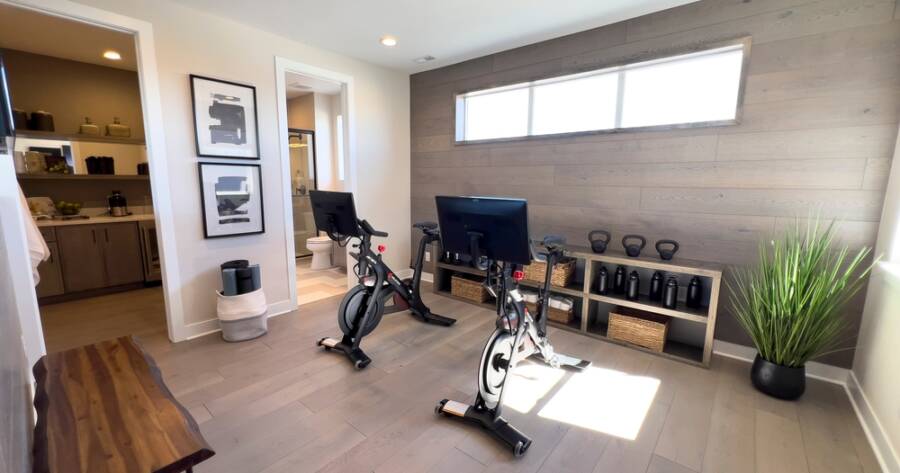Having a home gym is no longer just a luxury—it’s a practical way to stay consistent with fitness goals while saving time and avoiding crowded spaces. The good news is, you don’t need an entire basement or thousands of dollars to get started. Whether you live in an apartment or a house, you can create an effective workout space that fits your budget, lifestyle, and goals. With some planning and creativity, your perfect home gym is easier to build than you might think.
Step 1: Define Your Fitness Goals and Space
Before buying any equipment, identify what kind of workouts you want to do most often. Are you focused on strength training, cardio, yoga, or a mix of all three? Your goals determine not only the type of equipment you’ll need but also how much space to dedicate.
Next, assess your available area. A corner of the living room, a garage, or even a balcony can serve as your fitness zone. Make sure the surface is stable, well-ventilated, and has enough room for your body’s full range of motion. For most home gyms, an area of about six by eight feet is enough for foundational exercises like squats, pushups, and stretching.
Once you define your goals and space, you’ll avoid buying unnecessary gear and focus on what truly supports your training routine.
Step 2: Start with the Basics
Building a home gym doesn’t have to mean filling it with machines. Start with versatile tools that provide maximum benefit for minimal cost and space. Resistance bands, a yoga mat, and adjustable dumbbells are great starting points. These allow you to perform a wide range of exercises targeting different muscle groups without needing bulky setups.
- If your focus is strength training, begin with a pair of dumbbells, a kettlebell, or a barbell with removable plates. These items can grow with you as your strength improves.
- If you prefer bodyweight or cardio workouts, consider adding a jump rope, stability ball, or pull-up bar. Each piece enhances endurance, flexibility, and balance without taking up much space.
The goal isn’t to buy everything at once but to build gradually. Begin with essentials and add equipment only when you feel limited by your current setup.
Step 3: Make Use of Multi-Purpose Equipment
When working with a tight budget or limited space, multi-purpose equipment offers the best value. Adjustable benches, resistance systems, or modular racks allow you to perform numerous exercises in one spot.
A bench, for example, can serve as a seat for weight training, a base for step-ups, or a surface for core workouts. Similarly, a resistance band set can replace an entire rack of dumbbells by adjusting tension. Some compact home gym systems combine pulleys, cables, and handles for a full-body workout without requiring a dedicated room.
If you’re creative, household items can double as gym tools—sturdy chairs for triceps dips, towels for slider exercises, or backpacks filled with books for added resistance. These makeshift solutions are effective and cost-free, showing that progress doesn’t depend on expensive gear.
Step 4: Plan for Storage and Organization
A clean, organized space makes workouts more appealing and efficient. Small storage solutions help keep equipment accessible but out of the way. Wall hooks or shelving can hold resistance bands and mats, while stackable bins keep weights or accessories neatly stored.
If your gym area shares space with another room, such as a bedroom or office, consider foldable or compact equipment that can be tucked away. For example, collapsible benches or flat mats can slide under furniture, and adjustable dumbbells can replace entire racks.
By maintaining a clutter-free zone, you’ll reduce distractions and make it easier to focus on the workout itself. Organization also keeps your gear in good condition, saving money in the long run.
Step 5: Include Motivation in the Design
A home gym should feel inviting and inspiring. Lighting, sound, and visual elements all influence motivation. Natural light is ideal, but if that’s not possible, add bright LED lighting to keep the area energized.
Music also plays a big role—consider a small Bluetooth speaker or headset for focused workouts. Some people mount a mirror to check form, while others display a motivational quote or progress chart. The key is creating an atmosphere that feels personal and encouraging.
Your home gym doesn’t have to look like a professional studio. What matters most is that it supports your consistency and comfort.
Step 6: Upgrade Over Time
Once you’ve established a regular routine, you can gradually invest in upgrades that match your growing needs. This might mean adding a stationary bike, treadmill, or power rack as space and budget allow. Many people find that building a gym piece by piece helps them stay motivated—they see progress not only in fitness but also in their personal setup.
When expanding, choose quality over quantity. Reliable equipment lasts longer and performs better, making it a smarter investment. Prioritize items that serve multiple functions or fill gaps in your current routine.
Your Space, Your Fitness
A home gym doesn’t have to be large or costly to be effective—it just needs to work for you. By focusing on essentials, staying organized, and building gradually, you can create a space that encourages regular movement without draining your budget.
Every piece of equipment, every rep, and every improvement adds up to a stronger, healthier lifestyle. No matter your space or spending limit, a well-designed home gym puts fitness within reach—right where you live.

